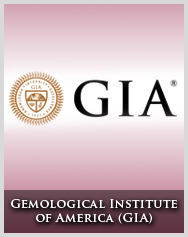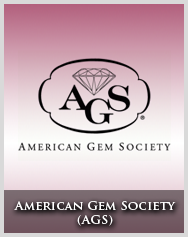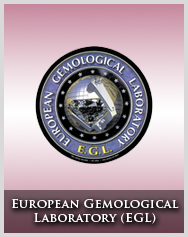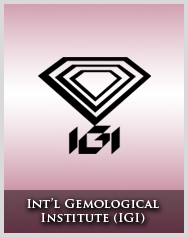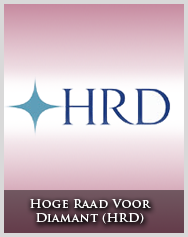 A diamond certificate, also called a diamond grading report, diamond dossier, or diamond quality document, is an official report created by a team of gemologists of a specific diamond grading laboratory. During the certification process, the diamond is evaluated, measured, and scrutinized using trained eyes, a jeweler's loupe, a microscope, and other industry tools. A completed certificate includes an analysis of the diamond's dimensions, clarity, color, polish, symmetry, and other individual characteristics. Many round diamonds will also include a cut grade on the report. A diamond certificate is a very useful tool for identifying a stone.
A diamond certificate, also called a diamond grading report, diamond dossier, or diamond quality document, is an official report created by a team of gemologists of a specific diamond grading laboratory. During the certification process, the diamond is evaluated, measured, and scrutinized using trained eyes, a jeweler's loupe, a microscope, and other industry tools. A completed certificate includes an analysis of the diamond's dimensions, clarity, color, polish, symmetry, and other individual characteristics. Many round diamonds will also include a cut grade on the report. A diamond certificate is a very useful tool for identifying a stone.
Although diamonds have been sought after and admired for thousands of years, only at the beginning of the 20th century did chemistry and other sciences advance to the point that objective, scientific grading of diamonds and other gemstones was made possible. The oldest gemological organization is the Gemological Institute of America, or GIA, founded in 1931 in Los Angeles, California.

Since the GIA's founding, other organizations have been created to meet rising worldwide demand for diamond certification. These include: AGS (American Gemological Society), HRD (Hoge Raad Voor Diamant; Diamond High Council), PGS (Professional Gem Sciences), EGL (European Gemological Institute) and the IGI (International Gemological Institute). Each of these labs follow a precise criteria and method of grading loose diamonds, all operating within a high set of parameters, in regards to grading a diamond's attributes and dimensions. The laboratory that is held in the highest regard by the diamond industry is the Gemological Institute of America. GIA's standards for grading have set the bar for all other gemological laboratories, making it the most trusted and respected name in gemological laboratories.
Founded in 1931, the Gemological Institute of America, or GIA, is an independent, non-profit organization considered by many to be the world's foremost authority in gemology. Introduced in 1953, their diamond and gemstone grading system is recognized worldwide. Manufacturers from around the world send diamonds and gems to GIA for examination and analysis.
The GIA's mission is to increase consumers' trust in diamonds and jewelry by upholding the highest standards of integrity, academics, science, and professionalism. They work toward this goal by providing jeweler and consumer education, conducting meticulous research, and developing state-of-the-art laboratory instruments for diamond inspections.
When a diamond is accompanied by a GIA certificate, the consumer is assured that the stone has been analyzed by an unbiased gemologist who upholds the highest standards of integrity, science, and professionalism.
Since 1943, the American Gem Society (AGS) has demonstrated a commitment to upholding the highest ethical standards in the diamond and jewelry industry. Driven by a goal to provide premium education for jewelry professionals and consumers, the society offers courses to all segments of the diamond industry. The AGS established a laboratory in 1996 to provide modern grading services for the diamond market.
Its conservative and unbiased approach to diamond grading has made the AGS one of the world's most respected gemological laboratories. Consequently, an AGS certificate guarantees an accurate analysis and evaluation of a diamond.
The European Gemological Laboratory, or EGL, was founded in Belgium more than 30 years ago. EGL is committed to protecting the integrity of the jewelry trade and promoting public interest through applied science, innovation, education, and exceptional service. The laboratory is credited with introducing new approaches to diamond grading and conducting advanced research with physicists, geologists, and mineralogists.
The EGL is accredited with introducing new approaches to diamond grading, the practice of certifying diamonds measuring less than one carat, and establishing the 'SI3' designation for diamond clarity. An EGL certificate is a valued document that aids consumers in the diamond buying process and is the result of thorough scrutiny of a diamond.
Established in 1975, the International Gemological Institute, or IGI, is the largest independent gemological laboratory in the world, with locations in all major diamond centers. IGI's mission is to provide jewelry professionals and consumers with extensive education programs and reliable diamond and fine jewelry certification.
An IGI certificate is comprised of a detailed analysis of a diamond's characteristics by several expert gemologists.
The Hoge Raad voor Diamant (HRD), translated as "Diamond High Council", was established in Antwerp in 1973 as the European counterpart to the GIA. Representing the global diamond trade to public governments and diamond organizations, HRD monitors and reports the import and export of over half of the world's loose diamonds.
HRD is at the forefront of advanced research and education in the diamond industry. Based on internationally accepted standards, an HRD diamond certificate is highly regarded among jewelers and consumers.

 A diamond certificate, also called a diamond grading report, diamond dossier, or diamond quality document, is an official report created by a team of gemologists of a specific diamond grading laboratory. During the certification process, the diamond is evaluated, measured, and scrutinized using trained eyes, a jeweler's loupe, a microscope, and other industry tools. A completed certificate includes an analysis of the diamond's dimensions, clarity, color, polish, symmetry, and other individual characteristics. Many round diamonds will also include a cut grade on the report. A diamond certificate is a very useful tool for identifying a stone.
A diamond certificate, also called a diamond grading report, diamond dossier, or diamond quality document, is an official report created by a team of gemologists of a specific diamond grading laboratory. During the certification process, the diamond is evaluated, measured, and scrutinized using trained eyes, a jeweler's loupe, a microscope, and other industry tools. A completed certificate includes an analysis of the diamond's dimensions, clarity, color, polish, symmetry, and other individual characteristics. Many round diamonds will also include a cut grade on the report. A diamond certificate is a very useful tool for identifying a stone.
